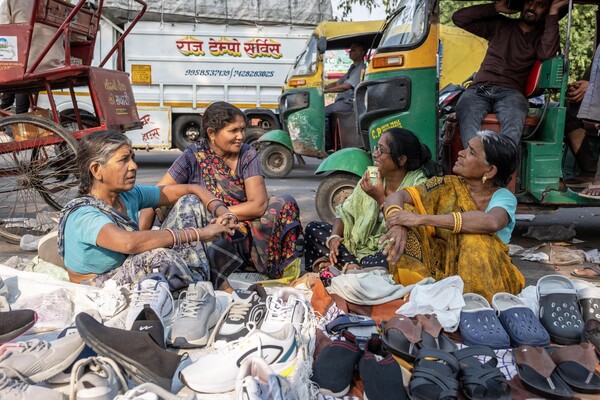
Image: Andriy Onufriyenko via Getty Images
Just as Ancil George was set to retire in 2014 from his job at Penn Libraries, he was lured back in with a thrilling opportunity: to become Penn’s first community outreach librarian.
The new role was a perfect fit for the 44-year Penn Libraries veteran, who in retirement planned to volunteer at West Philadelphia’s Henry C. Lea Elementary, helping out in the school’s deprived library. Fast-forward three years, the program, which began its work impacting about 500 K-8 students, now reaches 6,000, and is still growing.
“I’ll tell you, I’m working longer hours now than what I did before,” George says, while chatting in his office in Van Pelt-Dietrich Library Center. “But I have no one else to blame for my long hours than myself, and that’s because I really, really love what I’m doing.”
With generous financial backing from Penn Libraries’ donors, the community outreach program began as an initiative to aid local public school libraries debilitated by budget cuts.
“Most of Philadelphia’s public schools lack librarians,” George says. “It’s a lot harder for kids to be successful in an environment where they don’t have access to resources. We wanted to try to sort of bring these libraries back to life.”
The first call to action was for Penn Libraries to license and implement a circulation system at Lea, allowing students to check books out and bring them home and their family members to browse the school library’s books online, as well as request to borrow them for their children. Then, George, his work-study students, some staff librarians from Penn, and the nonprofit West Philadelphia Alliance for Children, catalogued all of Lea’s books, updating the inventory and giving them a proper home on the shelves in library classification order. Ever since this work was done at Lea, Penn Libraries has been able to scale these same processes to sponsor and improve more than a dozen additional public school libraries. And there’s no plan to stop there.
“Teachers were taking students to the school libraries, but the students were not able to take home any books,” explains Jon Shaw, Penn Libraries’ director of logistics and access services. “So kids could read the books in the library, but when library time was over, it was over. This new system changes that.”
Shaw, who’s been instrumental in expanding the community outreach program, stresses the ability Penn has had working with Lea to create a model and workflow that’s transferable.
“Not only can we expand to other schools, but any large research university based in a city can look at aspects of our community outreach program and replicate our work in their communities,” he says.
Penn Libraries has led numerous efforts to revamp Lea’s library space, including purchasing new furniture and repurposing used computers and other electronics, such as first-generation iPads that are no longer in use by the University. It’s also allocated funds to purchase new books for the school libraries, and sponsors book drives.
“We often ask teachers to make lists of books they think their students would enjoy,” George says. “One time, a teacher at Lea created a list for us. Did we select from the list? No. We bought the entire list. She was so excited.”
Involved with the program as a work-study student since its inception, Aizhaneya Carter, now a senior in the School of Arts & Sciences, has watched—and helped—Lea’s library transform.
“We’ve gotten to the point where students will come up to you and say ‘Oh, I want this book, can we have it for the library?’ and we can say, ‘Yes, we’ll have it in the catalogue in two weeks,’” says Carter. “We’re building new shelving now because they’ve become so full.”
Carter, who works at Lea’s library every Friday, says she is often re-shelving books, reading with and tutoring the students, and helping them with research.
But her impact goes far beyond that. Carter, a native of North Philadelphia, grew up going to public school and didn’t have consistent access to a library until high school out of state.
“For me, it means so much to see myself in these kids and to know that I’m able to provide a resource for them that would otherwise not be available,” she says. “It’s important for me to encourage these students that one day, no matter their circumstances, they can go to Penn. These students can make it.”
It’s a similar tune for most of the other 13 work-study students George oversees.
“I think about the story our first-generation, low-income students are able to tell these kids,” he says. “These students see their former selves in these kids, and these kids see a possibility.”
New this year in the Penn Libraries’ community outreach realm is Shaw and George’s push to work not only with communities outside of the University, but also within it. For instance, Penn Libraries now dedicates donor funds to the Greenfield Intercultural Center to help students at Penn who cannot afford their textbooks, and is working with Student Disabilities Services to digitize texts for students with disabilities.
“As we identify needs such as these across our campus and community, Penn Libraries embraces the opportunity to engage and support,” Shaw says. “We continuously look to increase access to information and assist in engendering an environment of learning and growing.”
It’s a philosophy shared by George.
“Yes, we do a lot of work with the schools in West Philadelphia, but we are sure to help out our community right here, our students right here that need us too,” he says.
Lauren Hertzler

Image: Andriy Onufriyenko via Getty Images

Four women street vendors sell shoes and footwear on a Delhi street.
(Image: Kannagi Khanna)

nocred

nocred